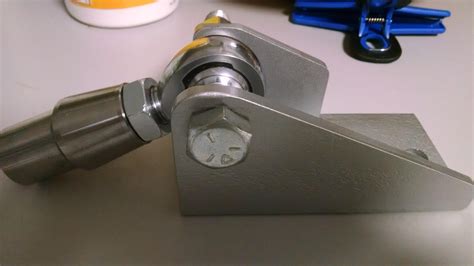How To Make Traction Bars
Ronan Farrow
Apr 01, 2025 · 3 min read

Table of Contents
How to Make Traction Bars: A Comprehensive DIY Guide
Traction bars are a fantastic way to improve the handling and performance of your vehicle, especially during acceleration and launches. They help reduce axle wrap and wheel hop, leading to better traction and a smoother driving experience. While you can buy pre-made traction bars, building your own can be a rewarding and cost-effective project. This guide will walk you through the process.
What are Traction Bars?
Before diving into the construction, let's clarify what traction bars are and why you might want them. Traction bars are essentially strong support bars that connect your vehicle's rear axle to the chassis. Their primary function is to prevent the axle from rotating or wrapping upwards under hard acceleration. This twisting motion, known as axle wrap, reduces traction and can lead to wheel hop – a violent bouncing of the wheels that's detrimental to performance and can damage components.
Benefits of Traction Bars:
- Improved Traction: Reduced axle wrap translates directly to better traction, especially during launches and hard acceleration.
- Reduced Wheel Hop: Eliminates or significantly minimizes the jarring wheel hop, resulting in a smoother and more controlled ride.
- Increased Performance: Improved traction leads to faster acceleration and quicker launches.
- Enhanced Durability: By reducing stress on the axle and suspension components, traction bars contribute to increased longevity of your vehicle's parts.
Materials Needed:
Building your own traction bars requires specific materials. The exact materials and dimensions will depend on your vehicle and personal preferences. However, here's a general list:
- Strong Steel Tubing: This forms the main body of the traction bar. Choose a diameter and wall thickness appropriate for the weight and power of your vehicle. Consider DOM (Drawn Over Mandrel) tubing for its superior strength.
- Metal Plates: Used for mounting the traction bars to the axle and chassis. Choose thick, high-quality steel plates for maximum durability.
- Welding Supplies: You'll need a welder, welding rod, and appropriate safety gear (gloves, mask, etc.). Ensure you are comfortable and proficient with welding before starting.
- Hardware: Bolts, nuts, washers – choose high-strength fasteners rated for the stresses involved.
- Measuring Tools: Tape measure, level, square, etc. Accurate measurements are crucial for proper alignment and function.
- Drill and Drill Bits: For creating mounting holes in the plates and other components.
- Paint (Optional): To protect the bars from rust and corrosion.
Step-by-Step Construction:
Building traction bars is a complex process that requires precision and expertise in metal fabrication and welding. This guide provides a general overview; consulting with a qualified mechanic or welder is highly recommended, especially for beginners.
- Measurements and Design: Carefully measure your vehicle to determine the required length and placement of the traction bars. Consider the geometry and clearance around existing components. Sketch a detailed design to guide your construction.
- Cut and Prepare Tubing: Cut the steel tubing to the desired lengths according to your design. Clean and prepare the ends for welding.
- Fabrication of Mounting Plates: Cut and shape the steel plates to fit your vehicle's axle and chassis. Drill holes for the mounting hardware.
- Welding: Carefully weld the tubing to the mounting plates. Ensure strong and secure welds are created. This step requires experience and the right equipment.
- Assembly and Installation: Carefully assemble the traction bars, and attach them to the vehicle's axle and chassis using the appropriate hardware. Double-check all connections for tightness and security.
- Testing and Adjustment: After installation, carefully test the traction bars under controlled conditions. Make any necessary adjustments to ensure proper function and alignment.
Safety Precautions:
- Welding Safety: Always wear appropriate safety gear when welding.
- Vehicle Safety: Ensure the vehicle is properly secured during installation and testing.
- Professional Assistance: If you are not comfortable with welding or metal fabrication, seek professional assistance.
This guide provides a basic framework. The specific details of your traction bar construction will be heavily influenced by your vehicle's make, model, and year. Remember to prioritize safety and seek expert advice if needed. Improperly installed traction bars can be dangerous.
Featured Posts
Also read the following articles
| Article Title | Date |
|---|---|
| How To Manually Retract Rv Steps | Apr 01, 2025 |
| How To Keep Snakes Out Of Your Garage | Apr 01, 2025 |
| How To Identify A 4l65e Transmission | Apr 01, 2025 |
| How To Prepare For A 50 H Hearing | Apr 01, 2025 |
| How To Keep Carbon Steel From Rusting | Apr 01, 2025 |
Latest Posts
Thank you for visiting our website which covers about How To Make Traction Bars . We hope the information provided has been useful to you. Feel free to contact us if you have any questions or need further assistance. See you next time and don't miss to bookmark.
